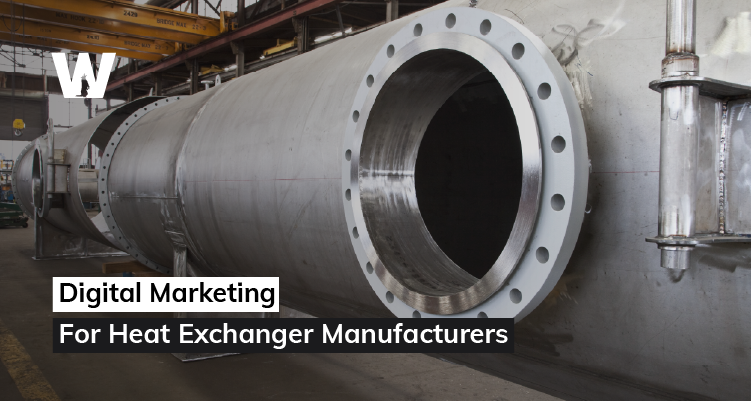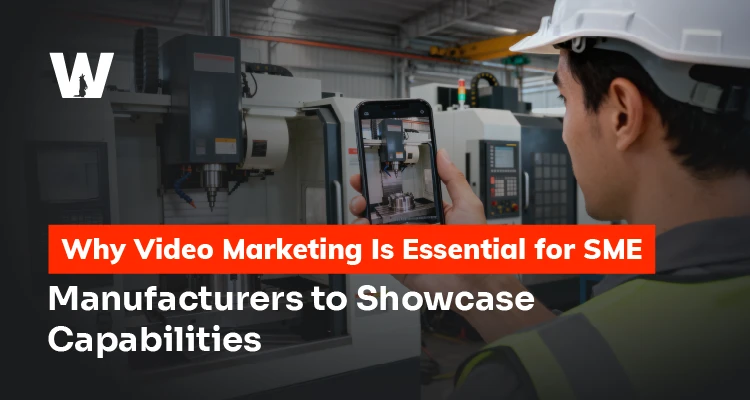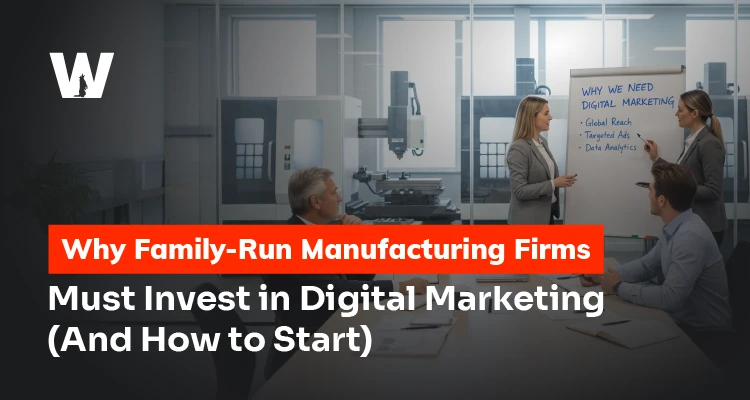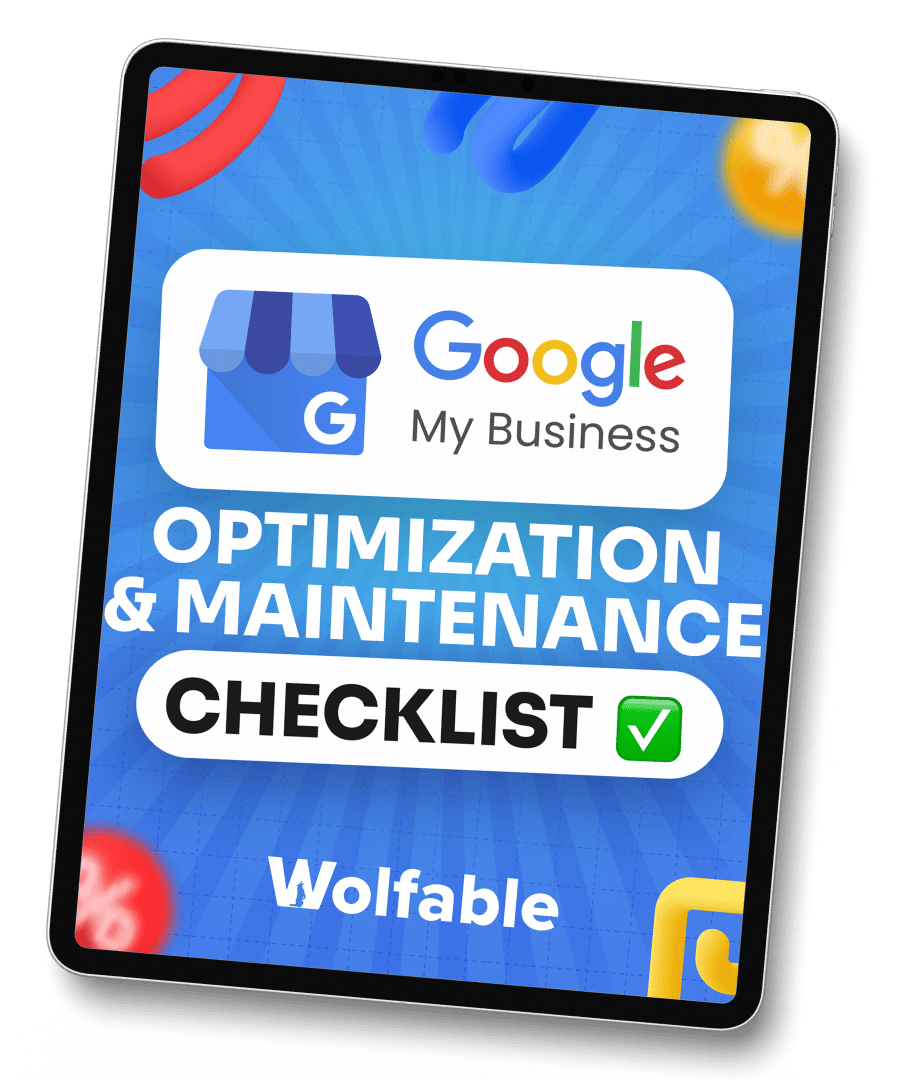Wraps up in 7 Minutes
In today's rapidly evolving digital landscape, heat exchanger manufacturers face a critical crossroads. The traditional industrial marketing playbook—trade shows, print catalogs, and relying solely on sales representatives—is no longer sufficient to drive sustainable growth.
Digital transformation isn't just reshaping consumer markets; it's fundamentally altering how B2B buyers research, evaluate, and select industrial equipment like heat exchangers.
Did you know that 70% of B2B decision-makers now research industrial products online before ever contacting a supplier? This shift has accelerated dramatically in recent years, with engineering and procurement teams increasingly relying on digital channels for technical information.
As competition intensifies in the global heat exchanger market—projected to reach $22.59 billion by 2025—manufacturers can no longer afford to treat digital marketing as an afterthought. It has become the primary battlefield where technical expertise must meet strategic digital visibility.
Understanding the Heat Exchanger Buyer Journey Online
The path to purchasing industrial heat exchangers has undergone a dramatic transformation. Today's engineering and procurement teams follow a sophisticated digital journey before finalizing vendor selection.
This journey typically begins long before a quote request or sales call. Research shows that B2B buyers complete nearly 70% of their decision-making process digitally before engaging directly with vendors.
For heat exchanger manufacturers, understanding this digital buyer journey is foundational to effective marketing. Let's break down the typical stages:
1. Awareness Stage: Engineers identify a thermal transfer challenge requiring a heat exchanger solution. Their first move? A technical Google search.
2. Research Stage: Buyers compare specifications, read technical case studies, and evaluate performance data across multiple manufacturers.
3. Consideration Stage: With a shortlist of potential solutions, buyers seek validation through case studies, technical webinars, expert recommendations, and peer reviews.
4. Decision Stage: Finally, buyers focus on business factors like pricing, lead times, service capabilities, and warranty terms before reaching out for quotes.
What's striking about this modern journey is that potential customers might eliminate your company from consideration without ever speaking to your sales team—all based on your digital presence.

Biggest Online Visibility Gaps Faced by Manufacturers
Heat exchanger manufacturers often struggle with significant digital visibility challenges that limit their ability to connect with potential customers online.
1. Technical Excellence Hidden Behind Poor Digital Presence
Many heat exchanger companies possess exceptional engineering capabilities but fail to communicate this expertise online. Your decades of manufacturing innovation mean little if prospects can't discover you through digital channels.
2. Industry-Specific Search Invisibility
When engineers search for specific heat exchanger solutions, many manufacturers aren't appearing in these results because they haven't optimized for technical search terms.
3. Content That Speaks to Machines, Not Engineers
Too many industrial websites feature generic content that fails to address the specialized questions engineers are asking. Your content must speak the language of thermal efficiency, material compatibility, and application-specific performance.
4. Incomplete Digital Technical Resources
Engineers expect immediate access to specifications, CAD drawings, efficiency calculators, and application guides. Without these digital resources, manufacturers lose credibility at critical research stages.
According to recent industrial marketing research, manufacturers who address these gaps experience 2.5x higher lead generation rates compared to those who maintain status quo digital approaches.
Digital Challenges Unique to Heat Exchanger Companies
1. Highly Technical Product Differentiation
Unlike consumer products with obvious visual differences, heat exchangers differ in technical specifications that aren't immediately apparent. Communicating these differences requires sophisticated content strategies.
2. Long and Complex Sales Cycles
The typical heat exchanger purchase involves multiple stakeholders and extended timelines—often 6-18 months from initial research to purchase. Digital marketing must sustain engagement throughout this extended process.
3. Engineer-to-Engineer Communication
Heat exchanger marketing requires translating complex engineering concepts into digital formats that resonate with other engineers. This demands specialized content creators who understand both thermal dynamics and digital engagement.
4. Application Diversity Challenges
Heat exchangers serve countless industries—from food processing to chemical manufacturing to power generation. Each application has unique requirements and terminology, requiring segmented digital approaches.
What Your Competitors Are Already Doing That You Might Not Be
Forward-thinking heat exchanger manufacturers are already implementing innovative digital strategies that give them a competitive edge:
1. Interactive Specification Tools
Leading manufacturers offer interactive selection tools that help engineers quickly identify the right heat exchanger models for their specific applications.
2. Application-Specific Content Hubs
Rather than generic product pages, innovative competitors are creating dedicated content ecosystems around specific applications with tailored case studies and technical guides.
3. Technical Webinar Series and Knowledge Libraries
Forward-thinking manufacturers regularly host technical webinars addressing specific heat transfer challenges, building valuable content libraries that continue generating leads.
4. Engineer-Focused Social Media Engagement
While many manufacturers neglect social platforms, leading companies maintain active presences on LinkedIn and YouTube with technical content that engages engineering audiences.
A revealing industry study found that heat exchanger manufacturers investing strategically in digital marketing are experiencing up to 3.7x higher qualified lead generation than those relying primarily on traditional channels.
Digital Marketing Strategies for Heat Exchanger Manufacturers
1. Website Design & User Experience for Industrial Buyers
Your website serves as your digital manufacturing floor—a place where prospective clients evaluate your capabilities and technical expertise.
Technical Information Architecture
Structure your site around how engineers actually search for solutions—by application, industry, heat exchanger type, and performance specifications.
Conversion Paths for Different Buyer Types
Create distinct user journeys for:
- Engineers seeking technical validation
- Procurement specialists looking for specifications and pricing
- Maintenance personnel seeking replacement parts
- C-suite executives evaluating overall value proposition
Technical Search Functionality
Implement robust internal search that understands technical terminology, model numbers, and application-specific terms. Engineers expect to quickly find exactly what they're looking for.
According to a recent engineering buyer study, 67% of industrial equipment researchers will abandon a website if they can't find relevant technical information within 2-3 minutes.
2. SEO Customized for Technical Product Pages
Technical Keyword Research
Move beyond basic terms like "heat exchanger manufacturer" to target specific long-tail technical queries such as:
- "ASME U-stamp shell and tube heat exchanger for steam applications"
- "Plate heat exchanger for high-viscosity dairy processing"
- "Corrosion-resistant materials for chemical heat exchangers"
Application-Based SEO Content Strategy
Organize content clusters around specific applications rather than just product types:
| Application Area | Supporting Content Types |
|---|---|
| Food & Beverage | Case studies, sanitation guides, regulatory compliance resources |
| Chemical Processing | Corrosion resistance data, safety documentation, material compatibility charts |
| HVAC Systems | Efficiency calculators, sizing guides, installation documentation |
| Power Generation | Performance under variable loads, durability studies, maintenance schedules |
Heat exchanger manufacturers who implemented technical SEO strategies experienced a huge increase in qualified engineering leads over 12 months compared to those with generic SEO approaches.
3. B2B Content Marketing (Case Studies, Technical Blogs, etc.)
Engineering-Focused Blog Strategy
Develop technical blog content that addresses specific challenges faced by engineers in various industries:
- Troubleshooting guides for common heat transfer issues
- Comparative analyses of different heat exchanger technologies
- Material selection guidance for challenging environments
- Energy efficiency optimization techniques
Technical Case Study Framework
Create comprehensive case studies that follow this engineer-friendly structure:
1. Challenge definition with specific technical parameters
2. Selection considerations and engineering calculations
3. Implementation details and challenges overcome
4. Measurable performance data and ROI metrics
5. Long-term results and maintenance considerations
According to Content Marketing Institute research, technical B2B buyers consume an average of 13 pieces of content before making a purchasing decision.
4. Email Workflows for Quote-Based Conversions
Segmented Technical Nurture Sequences
Develop separate email workflows based on:
- Industry application (chemical, food processing, HVAC, etc.)
- Heat exchanger type (plate, shell and tube, air-cooled, etc.)
- Buyer role (engineer, procurement, operations, executive)
- Project timeline (immediate need vs. future planning)
Quote Request Optimization Flow
Refine the critical path to requesting quotations:
1. Simplified initial quote request form (avoiding premature technical detail requirements)
2. Technical questionnaire for application-specific details
3. Engineering consultation scheduling options
4. Quote delivery with technical justification
5. Structured follow-up sequence
Email marketing metrics for industrial equipment show that technical content drives significantly higher engagement, with a 23% higher open rate and 154% higher click-through rate compared to general promotional content.
Get a Custom Digital Strategy for Your Heat Exchanger Business
5. LinkedIn & Industry-Specific Social Platforms
LinkedIn Technical Content Strategy
Develop a LinkedIn presence focused on establishing engineering authority:
- Technical articles written by your engineering team
- Application-specific performance insights
- Industry trend analysis and commentary
- Behind-the-scenes manufacturing quality control highlights
LinkedIn Group Engagement Plan
Actively participate in relevant industry groups:
- Process engineering communities
- Industry-specific forums (chemical processing, food manufacturing, etc.)
- Energy efficiency and sustainability groups
- Engineering professional associations
According to recent B2B marketing research, 65% of engineers use LinkedIn weekly for professional purposes, with 42% having used the platform to connect with vendors in the past year.
6. Paid Campaigns for Targeted B2B Lead Generation
Google Ads Technical Search Strategy
Develop highly specific campaigns targeting:
- Technical specifications ("316L stainless plate heat exchanger")
- Application challenges ("fouling-resistant heat exchanger for wastewater")
- Industry-specific terms ("3-A sanitary heat exchanger for dairy")
- Performance parameters ("high-pressure shell and tube exchanger 40 bar")
LinkedIn Technical Audience Targeting
Create campaigns specifically for:
- Process engineers in target industries
- Plant managers and facility directors
- Engineering consultants specializing in relevant systems
- MRO procurement specialists
- R&D teams in product development phases
According to industrial marketing benchmarks, well-targeted paid campaigns for technical products yield an average cost-per-qualified-lead 37% lower than broader B2B campaigns.
7. Analytics and Reporting to Optimize Industrial Campaigns
Technical Content Engagement Tracking
Implement specialized tracking for:
- Time spent on technical specification pages
- Interaction with sizing calculators and selection tools
- Technical documents download patterns
- CAD file usage analytics
- Video completion rates for technical demonstrations
Multi-Touch Attribution Modeling
Develop attribution models that account for the complex, lengthy industrial buying process:
- First-touch attribution for awareness channels
- Linear attribution across the extended sales cycle
- Custom attribution weightings for technical content engagement
- Last-touch attribution for quote request generation
Manufacturers who implement comprehensive analytics see a 31% higher marketing ROI and 22% shorter sales cycles compared to those using standard reporting.
How Digital Marketing Aligns with Your Sales Team's Goals
Digital marketing isn't separate from sales—it's a powerful amplifier that makes your sales team more effective.
Pre-Qualified Technical Lead Generation
Digital marketing pre-qualifies prospects before they reach sales teams:
- Identifying prospects who have engaged with specific technical content
- Tracking which application guides and case studies they've studied
- Noting which product specifications, they've downloaded
- Monitoring which sizing calculators they've used
Technical Sales Enablement Resources
Equip sales teams with insights generated through digital channels:
- Prospect engagement history with technical content
- Competitive research behavior patterns
- Specific applications of interest based on content consumption
- Estimated project timeline based on engagement patterns
Heat exchanger sales teams supported by comprehensive digital marketing close deals 27% faster and achieve 34% higher average deal sizes compared to those relying primarily on traditional sales approaches.
Why Heat Exchanger Manufacturers Trust Wolfable
When heat exchanger manufacturers partner with Wolfable - Best Digital Marketing Agency for Heat Exchanger Manufacturers, they gain more than just a marketing agency—they access a team that understands the unique challenges of industrial technical marketing.
Deep Industrial Marketing Expertise
Since 2016, Wolfable has helped manufacturing clients bridge the gap between technical excellence and digital visibility. We understand the heat exchanger industry's unique challenges and opportunities.
Our diverse team brings together specialized skills crucial for effective industrial marketing:
- Technical content writers who understand engineering principles
- Web developers experienced with industrial websites and technical resources
- Data analysts who can measure what matters in complex B2B sales cycles
- Designers who can translate technical concepts into compelling visuals
Results-Driven Approach
At Wolfable - Best Digital Marketing Agency for Heat Exchanger Manufacturers, we believe in letting data and results speak for themselves. For heat exchanger manufacturers, this means:
- Measurable increases in qualified technical leads
- Improved search visibility for application-specific terms
- Higher engagement with technical content
- Shortened sales cycles through digital enablement
Blend of Creativity and Technical Precision
What sets Wolfable - Best Digital Marketing Agency for Heat Exchanger Manufacturers apart is our ability to blend creative marketing approaches with the technical precision heat exchanger manufacturers require. We deliver what we call "wow moments"—digital experiences that impress engineers while conveying critical technical information.
Let's Turn Technical Expertise into Market Visibility
The heat exchanger manufacturing industry stands at a critical inflection point. Technical excellence alone no longer guarantees market success—it must be paired with digital visibility that reaches today's researchers, engineers, and procurement specialists.
Your company's engineering expertise deserves to be discovered. Your manufacturing quality should be recognized. Your application knowledge needs to reach those who would benefit from it.
Whether you're struggling with technical SEO challenges, need assistance developing engineer-focused content, or want to implement a comprehensive digital strategy, Wolfable has the expertise to help you transform technical excellence into market leadership.
The heat exchanger manufacturers who will thrive in the coming decade aren't necessarily those with the most advanced products—they're the ones who most effectively communicate their technical advantages through strategic digital channels.
Ready to elevate your heat exchanger company's digital presence?
Contact Wolfable today for a no-obligation digital assessment. We'll analyze your current online visibility, identify your biggest opportunities for improvement, and outline a clear path to increased market visibility and lead generation.









